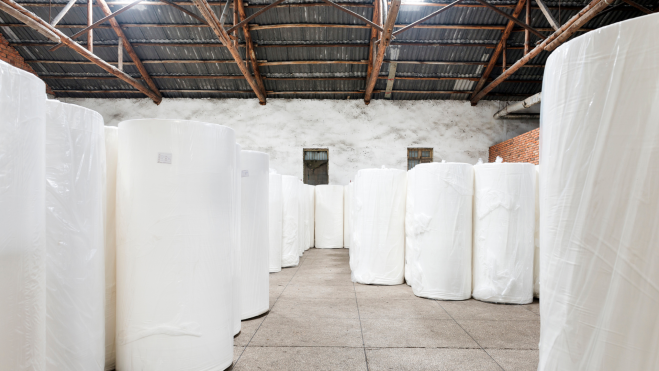The Spanish paper sector is experiencing a moment of growth in production and consumption, with clear implications for the cosmetic and personal care industry, where sustainable packaging is gaining more and more prominence. However, the sector's turnover has not kept pace with this boost, according to the latest data from the Spanish Association of Pulp, Paper and Cardboard Manufacturers (Aspapel), collected by Alimarket.
Paper and cardboard production for packaging grows
In 2024, Spain produced 6.56 million tons of paper and cardboard, which represents an increase of 8.5% compared to the previous year. More than two thirds (68.6%) of that production was destined for packaging, a key category for beauty brands looking for alternatives to plastic.
This growth consolidates Spain as the sixth largest paper producer in Europe, with a share of 7.4% of the continental total.
In addition, pulp production rose by 5.3%, reaching 1.69 million tons, reinforcing the national supply of raw material for secondary packaging such as cases or presentation boxes.
Increased consumption driven by key sectors
Domestic consumption also grew by 6.2%, to 6.73 million tons, with special emphasis on paper for hygienic and sanitary use (+14.6%) and packaging (+9.1%). This trend reflects the change in consumer habits and the preference for recyclable and biodegradable options, especially in sectors such as natural cosmetics and ecological retail.C
It grows, but turnover stagnates
Despite the productive dynamism, the turnover of the paper sector stagnated, with 5,232 million euros in 2024, 0.6% less than the previous year. The fall was more pronounced in pulp (-12.9%), while paper and cardboard only advanced a slight 0.5%.
According to ASPAPEL, this stagnation is explained by the international pressure on prices, the increase in energy costs and high structural costs that limit margins compared to producers in other more competitive markets.
Sustainability continues to be seen as an engine of innovation
One of the most notable aspects is the progress in recycling and sustainability:
-
Spain recovered 5.2 million tons of paper and cardboard, with a recycling rate of 83.6%, which places it as the third most recycling country in the EU.
-
88.4% of the wood used was of national origin and came from sustainable plantations.
-
Investments in the sector reached 292 million euros, with a focus on:
-
Technological innovation (20.4%)
-
Environmental and quality improvement (17.7%)
-
Increase in production capacity (16.2%)
-
